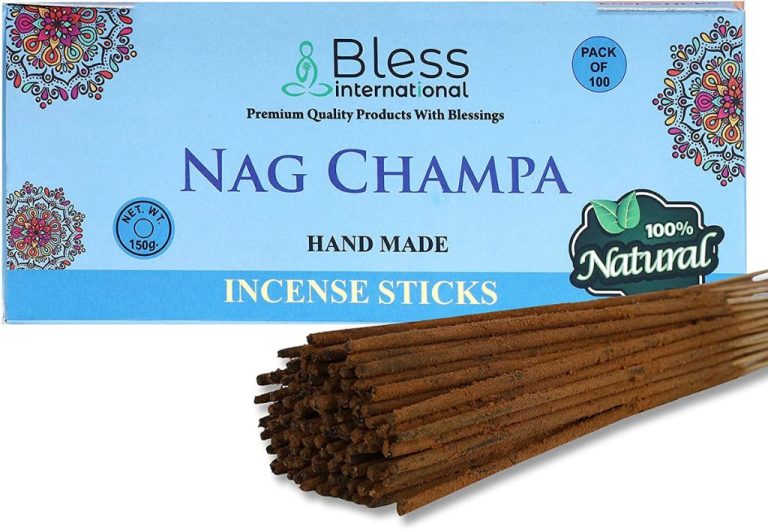Why Do Wax Melts Lose Their Smell So Fast?
Wax melts have become an increasingly popular home fragrance option in recent years. These small pieces of scented wax are designed to be melted in wax warmers, releasing a lovely aroma into the surrounding air. However, many users have noticed that the scent from wax melts tends to fade quite quickly after melting compared to candles or other fragrance methods.
There are several reasons why wax melts lose their scent so fast. The low fragrance load, small size, lower melting point, lack of a flame, type of fragrance oil used, and age of the wax melt can all play a role. This article will explore the main factors that contribute to wax melts losing their smell quickly, as well as some tips for making your wax melts last longer.
What Are Wax Melts?
Wax melts, also sometimes called tart melts or wax tarts, are small pieces of soy, paraffin or vegetable wax that have been infused with fragrant oils. They are designed to be warmed in an electric wax warmer, which slowly melts the wax and releases its aroma into the air to scent a room or area in your home.
Unlike candles which have a wick that must be lit with a flame, wax melts are flameless. The wax warmer gently heats the wax melts just enough to melt them and disperse the fragrance, without needing to actually light anything on fire. This makes them very convenient and safe to use. Wax warmers come in electric styles that are powered by an outlet, as well as battery-operated styles.
Wax melts are popular for scenting homes because they offer a wide variety of fragrances to choose from. Once melted in a wax warmer, they fill a room with a pleasant ambient aroma. They are easy to use, safer than burning open flames, and the wax itself is reusable until the fragrance runs out.
Reason 1: Low Fragrance Load
One of the main reasons wax melts lose their scent so quickly is due to their low fragrance load. Fragrance load refers to the amount of fragrance oil used in a wax melt or candle. On average, wax melts have a fragrance load between 4-8%, whereas candles often have a fragrance load of 10% or higher.
The lower fragrance load in wax melts means there is less fragrance oil to emit scent into the air. As a result, the scent from wax melts tends to dissipate faster than candles. With less fragrance oil mixed into the wax, the wax melt simply runs out of scent more quickly.
The low fragrance load also explains why multiple wax melts are often required to scent a room effectively. But even then, the scent throws of wax melts only tend to last several hours before fading away.
Reason 2: Smaller Size
Wax melts are much smaller in size compared to traditional candles. This smaller size means wax melts have a higher surface area to volume ratio. The increased surface area allows more of the fragrance to be exposed to air. When fragrance is exposed to air, the scent particles get dispersed and diluted more quickly. With more surface area exposed relative to the total volume, wax melts lose their scent faster than larger candles.
Additionally, the small size of wax melts means there is simply less wax and less fragrance oil overall compared to a large candle. Most wax melts contain just a few grams of wax and oil, whereas a candle may contain 80-150 grams. With less total fragrance loaded into the wax melt, there is less fragrance available to be released over time. The smaller amount of wax and fragrance limits how long the scent will last.
Reason 3: Lower Melting Point
Unlike candle wax, the wax used in wax melts has a lower melting point. This allows the wax melts to liquefy at lower temperatures so they release fragrance when heated gently in a wax warmer. However, this lower melting point also means the fragrances evaporate more quickly compared to candles. Since wax melts are designed to melt at temperatures as low as 120-150°F, the volatile fragrance oils dissipate faster at these lower temperatures compared to a burning candle wick which can reach temperatures of around 1,400°F.
The higher heat of a candle flame helps lock in fragrance oils for a longer period. But without a wick and open flame, wax melts depend solely on the lower melting point wax to warm and release the fragrances. As soon as the wax cools and hardens again, the evaporation process stops, and any remaining fragrance oils quickly diminish.
Reason 4: No Wick or Flame
Unlike candles, wax melts do not have a wick that is lit with a flame. The wick in a burning candle continuously warms and melts the wax surrounding it. This allows the candle wax to remain in a melted, liquefied state as long as the wick is lit. The heat from the flame causes the fragrant oils in the melted wax to be released into the air.
With wax melts, there is no wick or flame heating the wax once it hardens after the initial melting. This means that once the wax melt has hardened again, the fragrance stops being released into the air. Without a wick and flame to keep the wax in a warm, melted state, the fragrance oils are trapped in the hardened wax and cannot permeate the room.
Reason 5: Fragrance Oils Used
Many wax melt makers use cheaper fragrance oils that are diluted or synthetic versions of essential oils. While this cuts costs for the manufacturer, it also significantly reduces how long the fragrance lasts compared to using pure essential oils or higher quality fragrance oils.
Essential oils extracted from plants are highly concentrated and provide a much stronger aroma than cheaper fragrance oils. Many major essential oil brands use proprietary extraction and distillation processes that retain more of the aromatic compounds. This results in essential oils that will provide much longer-lasting fragrance in wax melts and aromatherapy applications.
Likewise, there are different grades of synthetic fragrance oils. Higher quality fragrance oils made with more concentrates of aroma chemicals will typically last longer than diluted versions or fragrances containing more filler oils. So when buying wax melts, look for products using pure essential oils or finer fragrance oils rather than the cheaper types if you want the scent to linger.
How to Make Wax Melts Last Longer
There are several tips and tricks you can use to extend the scent throw and longevity of your wax melts:
Trim the Edges
When your wax melt finishes melting, there will likely be some remaining wax around the edges that didn’t pool properly. Let it fully harden again and then use scissors to trim off those outer edges. This allows the melted wax to pool more evenly next time, releasing more fragrance.
Keep Sealed Between Uses
Be sure to store your wax melts in an airtight container or ziplock bag when not in use. Exposure to air can cause the fragrances to dissipate faster.
Combine Complementary Scents
You can mix together wax melts of complementary fragrance families like florals, fruits, vanilla, woodsy, etc. The combination helps the scents last longer than a single note alone.
Avoid Burning Too Long
Don’t keep your melts pooled for longer than the recommended time, usually 2-4 hours. Letting them burn too long reduces how much fragrance remains for future uses.
Allow Proper Curing Time
When making homemade wax melts, be sure to allow them a proper cure time of 1-2 weeks before using. This helps the fragrance fully bind with the wax so it’s not quickly burned off.
When to Throw Out Old Wax Melts
Wax melts usually last between 4-6 weeks if stored properly. However, there are some clear signs that indicate when it’s time to throw away your old wax melts:
Appearance Changes
If the wax cubes or tarts look discolored, dried out, or misshapen, they are past their prime. The wax may sweat or get oily looking. You’ll also notice dust and debris sticking to old wax melts.
Losing Scent
If you can barely smell the fragrance anymore when warming the wax, it’s time to let that one go. Faded wax melts won’t provide a nice scent experience.
No Wax Pool
Fresh wax melts form a small melted wax pool on top when warmed. Old wax doesn’t melt properly and won’t pool well.
Soot Build Up
Excessive black soot accumulating on the warmer dish is a sign the wax may be old and breaking down.
For safety, refrain from burning wax older than 2 months. The wax may not melt properly and can pose fire hazards. Old wax also gives off more soot and particles which can irritate lungs. Stick to freshly made wax melts for the best experience.
Conclusion
In summary, there are several key reasons why wax melts tend to lose their scent relatively quickly compared to candles. The main factors are their low fragrance load, smaller melted size, lower melting point, lack of a wick and flame, and the type of fragrance oils used.
To help extend the scent throw of your wax melts, try using a wax melt warmer instead of a candle warmer, warming multiple melts at once, keeping your melts sealed when not in use, and warming them in smaller spaces. It can also help to buy wax melts from reputable sellers that use higher fragrance loads.
At the end of the day, wax melts are made to be inexpensive and convenient, not long-lasting. Enjoy the scent while it lasts, and don’t hesitate to throw out melts once the fragrance fades. With proper care and storage, you can maximize the scent life, but some fading over time is inevitable.



